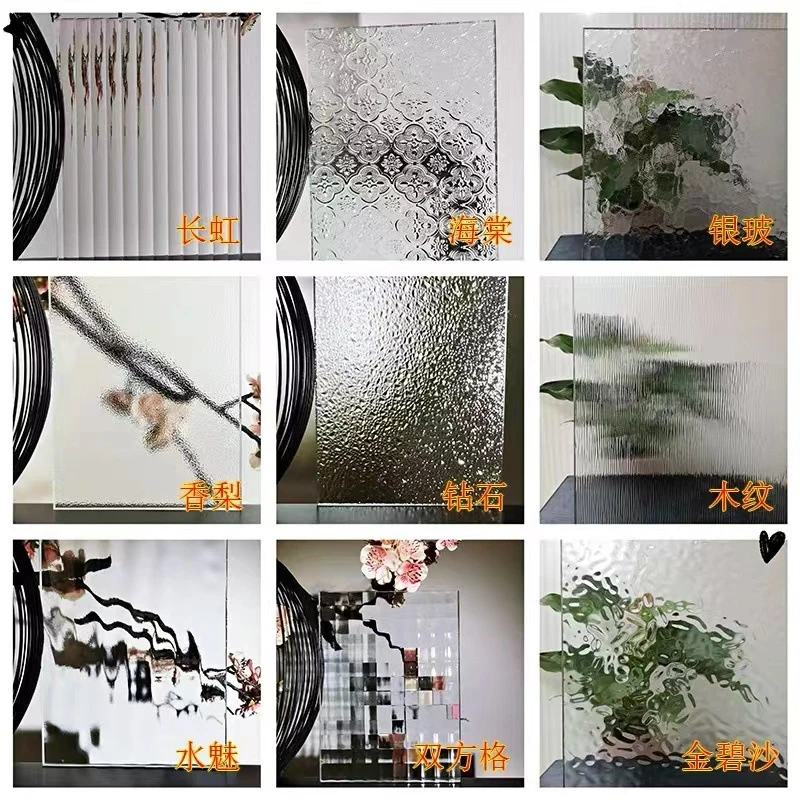Understanding Laminated Glass and Tempered Glass A Comprehensive Overview
Glass is a fundamental component in modern architecture, design, and manufacturing due to its versatility and aesthetic appeal. Among the various types of glass, laminated glass and tempered glass are two popular choices, each featuring distinct characteristics and applications. This article aims to explore the properties, advantages, and common uses of laminated glass and tempered glass, helping to clarify their roles in various industries.
Laminated Glass Structure and Benefits
Laminated glass is produced by sandwiching one or more layers of polyvinyl butyral (PVB) or another interlayer material between two or more sheets of glass. This process not only enhances the safety and strength of the glass but also provides excellent sound insulation and UV resistance. One of the most significant advantages of laminated glass is its ability to hold together when shattered. The interlayer acts as a barrier, preventing glass shards from flying apart, which is particularly beneficial in enhancing safety and security.
In addition to improved safety, laminated glass offers sound reduction qualities, making it ideal for buildings located in noisy environments. It effectively minimizes outside noise, creating a more peaceful indoor atmosphere. Moreover, the UV-blocking properties of the interlayer help protect interior furnishings and artworks from fading due to sun exposure. This feature makes laminated glass a preferred choice in museums, galleries, and residential buildings that prioritize aesthetics and preservation.
Laminated glass finds application in various sectors, including automotive, architectural, and decorative design. It is commonly used in windshields, skylights, curtain walls, and glass floors. The ability to customize the thickness and type of glass used makes laminated glass versatile, catering to specific design requirements while ensuring safety and functionality.
Tempered Glass Strength and Durability
laminated glass and tempered glass
Tempered glass, also known as toughened glass, undergoes a rigorous manufacturing process that involves heating it to high temperatures and then rapidly cooling it. This process increases the glass's strength, making it up to five times stronger than standard glass of the same thickness. One of the main benefits of tempered glass is its ability to withstand thermal stress, which makes it suitable for use in environments with significant temperature variations.
When broken, tempered glass shatters into small, blunt pieces rather than sharp shards, significantly reducing the risk of injury. This safety feature makes it a popular choice for applications where breakage is a concern, such as shower doors, glass doors, and windows in high-rise buildings. Additionally, tempered glass's resistance to thermal stress allows it to be used in external facades and balustrades, where it can withstand heat from the sun without compromising structural integrity.
Beyond safety and durability, tempered glass also has aesthetic appeal. It can be produced in various thicknesses and finishes, making it a favorite option in contemporary architecture and design. Its clarity and strength allow for expansive views, which is particularly desirable in residential and commercial buildings. Moreover, tempered glass can be treated for specific applications, including frosting, tinting, or adding reflective coatings, providing further design flexibility.
Conclusion
In summary, both laminated glass and tempered glass play significant roles in modern construction and design, offering unique benefits suited to different needs. Laminated glass excels in safety and sound insulation, making it ideal for high-traffic areas and environments requiring enhanced security and noise reduction. On the other hand, tempered glass provides superior strength and thermal resistance, making it an excellent choice for applications exposed to temperature fluctuations and physical stress.
Understanding the distinctions between these two types of glass enables architects, builders, and consumers to make informed decisions based on specific project requirements. Whether enhancing safety in residential buildings or creating stunning commercial facades, laminated glass and tempered glass continue to shape the landscape of modern architecture, combining functionality with aesthetic elegance.
 Afrikaans
Afrikaans  Albanian
Albanian  Amharic
Amharic  Arabic
Arabic  Armenian
Armenian  Azerbaijani
Azerbaijani  Basque
Basque  Belarusian
Belarusian  Bengali
Bengali  Bosnian
Bosnian  Bulgarian
Bulgarian  Catalan
Catalan  Cebuano
Cebuano  Corsican
Corsican  Croatian
Croatian  Czech
Czech  Danish
Danish  Dutch
Dutch  English
English  Esperanto
Esperanto  Estonian
Estonian  Finnish
Finnish  French
French  Frisian
Frisian  Galician
Galician  Georgian
Georgian  German
German  Greek
Greek  Gujarati
Gujarati  Haitian Creole
Haitian Creole  hausa
hausa  hawaiian
hawaiian  Hebrew
Hebrew  Hindi
Hindi  Miao
Miao  Hungarian
Hungarian  Icelandic
Icelandic  igbo
igbo  Indonesian
Indonesian  irish
irish  Italian
Italian  Japanese
Japanese  Javanese
Javanese  Kannada
Kannada  kazakh
kazakh  Khmer
Khmer  Rwandese
Rwandese  Korean
Korean  Kurdish
Kurdish  Kyrgyz
Kyrgyz  Lao
Lao  Latin
Latin  Latvian
Latvian  Lithuanian
Lithuanian  Luxembourgish
Luxembourgish  Macedonian
Macedonian  Malgashi
Malgashi  Malay
Malay  Malayalam
Malayalam  Maltese
Maltese  Maori
Maori  Marathi
Marathi  Mongolian
Mongolian  Myanmar
Myanmar  Nepali
Nepali  Norwegian
Norwegian  Norwegian
Norwegian  Occitan
Occitan  Pashto
Pashto  Persian
Persian  Polish
Polish  Portuguese
Portuguese  Punjabi
Punjabi  Romanian
Romanian  Russian
Russian  Samoan
Samoan  Scottish Gaelic
Scottish Gaelic  Serbian
Serbian  Sesotho
Sesotho  Shona
Shona  Sindhi
Sindhi  Sinhala
Sinhala  Slovak
Slovak  Slovenian
Slovenian  Somali
Somali  Spanish
Spanish  Sundanese
Sundanese  Swahili
Swahili  Swedish
Swedish  Tagalog
Tagalog  Tajik
Tajik  Tamil
Tamil  Tatar
Tatar  Telugu
Telugu  Thai
Thai  Turkish
Turkish  Turkmen
Turkmen  Ukrainian
Ukrainian  Urdu
Urdu  Uighur
Uighur  Uzbek
Uzbek  Vietnamese
Vietnamese  Welsh
Welsh  Bantu
Bantu  Yiddish
Yiddish  Yoruba
Yoruba  Zulu
Zulu 

